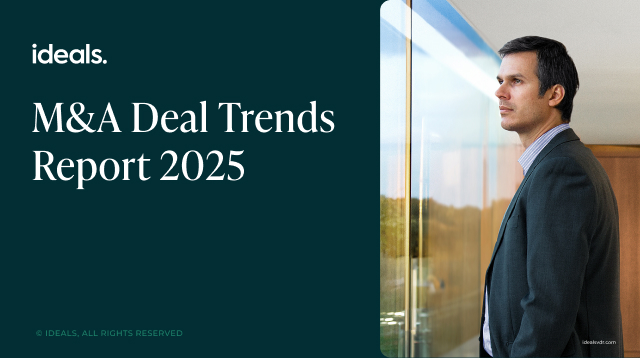The lower middle market (LLM) can be hard to access, but rich in opportunity. That insight led Henry Linehan to co-found Centrix Partners, a UK-based advisory firm focused on helping investors source and execute deals in this often-overlooked space.
In our conversation, Henry reflected on his early career in private equity, the journey behind launching Centrix, and how his team is navigating today’s M&A environment.
Q: What shaped your early experience in M&A?
I started my career at a London-based private equity fund. When I joined, there were a dozen people and we were investing out of our first fund. By the time I left, the firm had grown to ~60 people, we’d raised three funds, and launched two new investment strategies.
I was very fortunate to join in those early days; it was a highly entrepreneurial environment and you could really shape your own path. I was on a steep learning curve, which I loved, and I was given great exposure to operational investing and management early in my career.
Over time, I had the chance to work on — and eventually lead — a wide range of transactions across the UK, Europe, and US. The fund was concentrated and operationally focused, which meant I was able to work closely with management teams and serve on the Board of several portfolio companies. Through this, I developed a focus on portfolio M&A, opening my eyes to the depth of untapped value in the lower middle market. This ultimately led to the creation of Centrix Partners.
Q: Can you tell me about launching Centrix and the journey since?
I’ve always been interested in finding my own path. It’s what led me to move to London, join a young PE fund, and eventually co-found Centrix. For Centrix specifically, there were two main drivers for launching the business.
First, we saw a huge opportunity in the lower middle market. There are a lot of high-quality businesses in this space — profitable, growing, with defensible moats and longstanding customer relationships. Many of them are for sale or have succession issues, but buyers are put off by the lack of reliable information, the high resource and time commitment required, and the deal uncertainty that comes with working with founders. We felt that gap needed to be bridged.
The second reason was the mismatch we saw between traditional advisory services and the practical support acquirers actually need. Most advisors stop at deal sourcing or basic introductions, and even then, we found their value-add was minimal. We wanted to go much deeper, offering a more practical, end-to-end service led by former PE investors.
Q: Can you talk about your approach to dealmaking and how you’re working with clients?
For origination, we avoid the traditional approach of making a thousand phone calls and sending over a list of targets that aren’t really relevant. We like to say: “We give you deals, not lists.” Our list might be only 20 targets, but we’ll already have met with the owner, built a detailed profile of the business, and engaged in pricing discussions such that all 20 will be transactable deals.
For execution, our senior team has done over 125 transactions, almost all of which have been in the lower middle market. We focus on markets we know well and have developed both the relationships and the skill set that comes from experience in structuring these deals, managing tricky negotiations, and navigating complex deal dynamics.
Ultimately, we approach our clients as partners, often becoming embedded in their deal process and sitting alongside their C-suite as private equity / M&A deal specialists.
Q: Is there a specific deal that stands out so far?
A European analytics software group was acquiring a US competitor, and information on the target business was very limited. It appeared to be generating zero profit, but when we dug deeper, we identified around a million dollars in costs that, after discussion (and a lot of work), the owner agreed could be streamlined post-transaction.
We struck a deal in principle but during due diligence, we uncovered a potential tax liability, which meant we had to restructure the transaction, from a share purchase to an asset purchase. The problem was that under the new structure, the vendor risked being double-taxed and was therefore unwilling to sign off on it.
We eventually found a solution where we could attach a large portion of the business’s value directly to the owner through a US tax code work around, so that the proceeds of the sale would be treated as capital gains only. We closed shortly thereafter and it ended up being one of the more successful deals of my career.
It reinforced my belief that attractive opportunities exist at this end of the market if you know where to look, and that real value comes from deal execution.
Q: More than 95% of your firm’s deals are proprietary. What does that mean and what difference does it make for your clients?
Essentially, it means we avoid auction processes, preferring instead to engage with sellers unilaterally and exclusively. This is extremely valuable for our clients and a cornerstone of Centrix Partners.
By dealing one-to-one with sellers, we avoid competition with other buyers, we have better control of the timelines, and we gain more flexibility on how we structure the deal. This leads to better negotiating power for the buyer and better deals overall. From the seller’s perspective, it can also be helpful to have one committed buyer, as there’s less disruption to the business, higher deal certainty, and often a better fit overall.
We achieve this by investing a lot of time developing relationships with founders, CEOs, and shareholders, often long before they’re thinking about selling. We only operate in markets we know well and have done deals in, so we often know the key players already. For example, in the transaction I mentioned earlier, we started talking to that owner two years before the deal closed.
Q: How would you describe the current deal environment in the lower middle market?
First, there’s the macro environment, about which I’m cautiously optimistic. Buyers and lenders are being more selective, but high-quality assets are still changing hands.
For our market, things are slightly different. There are around 10 million SMEs in EMEA and the US where the owners are over 65 years old and don’t have a succession plan. That means lots of opportunities.
There are moments that create spikes in activity — like when the new Labour government announced capital gains tax increases last year — but overall, there’s a steady and growing wave of businesses that need to sell. I think that trend will continue, and so will investor interest in them.
Q: Are there any emerging trends you think dealmakers should pay close attention to?
One trend is increased selectivity in add-ons. M&A is shifting from purely revenue-accretive acquisitions toward bolt-ons that deliver real margin uplift or strategic synergies. Sellers with credible expansion plans and integration roadmaps are attracting premium interest from buyers.
The second trend is more macro. Many LBOs refinanced at the 2021 peak and now face refinancing over the next year or two. This will expose them to much higher interest rates, creating opportunities for buyers able to identify strong businesses facing near-term debt challenges. They may need to refinance at a higher rate, which can compress equity value and create a buying opportunity.
The third trend is the increasing use of generative AI. I recently read that 40% of PE buyers now use AI tools for sourcing, due diligence, or market mapping — compared with zero three or four years ago. That’s a very active development in our market.




